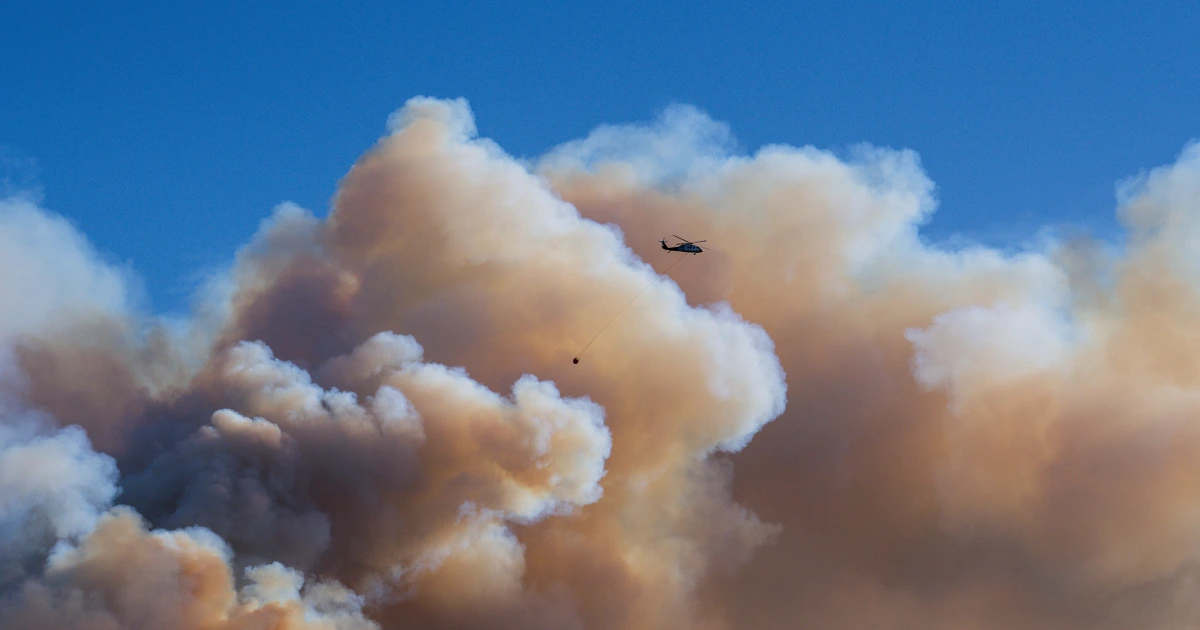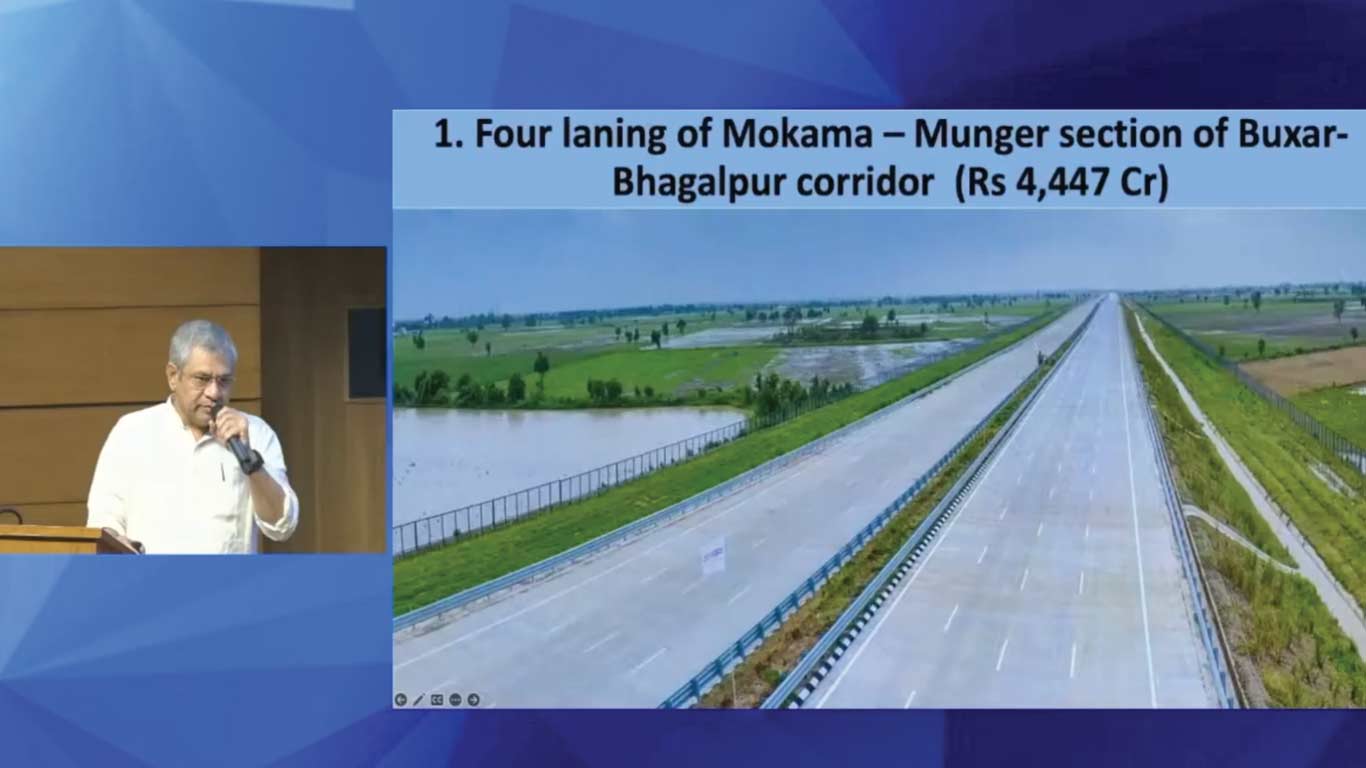
Wildfire smoke is responsible for tens of thousands of deaths each year and will do more harm to U.S. residents by midcentury than any other threat driven by climate change, including extreme heat.
That’s the conclusion of a new research paper that provides some of the most extensive modeling of the growing health toll of wildfire smoke on public health in the U.S.
The study, which was published in the journal Nature on Thursday, found that each year, on average, wildfire smoke is causing more than 41,400 excess deaths, or more than would be normally expected without smoke given the demographics of the U.S. That figure is more than twice what was previously recognized in other studies.
By midcentury, the study’s authors expect that number to grow by an additional 26,500 to 30,000 deaths as human-caused climate change worsens and the risk of wildfires igniting increases.
“Wildfire smoke is a much larger health risk than we might have understood previously,” said Marshall Burke, a professor of environmental social sciences at Stanford University and a study author.
When quantified in economic terms, Burke said he and his collaborators were surprised to find the cost of smoke deaths exceeded all other monetary damages attributable to climate change in previous research, like agricultural losses, heat deaths and energy costs.
A growing body of research suggests wildfire smoke exposure causes significant health problems. Small particles in wildfire smoke penetrate into the lungs and can circulate in the bloodstream. Smoke can increase risk for asthma, lung cancer and other chronic lung problems. Wildfire smoke is also associated with preterm birth and miscarriage.
The study offers a stark vision of an increasingly smoke-choked nation. Decades of work to clean up industrial U.S. air pollution through the Clean Air Act is being undone as fires in the western United States and Canada send plumes of smoke into the atmosphere that then spread across the landscape.
“Wildfire smoke is beginning to turn back the clock on our air pollution levels, at least in the western states and New York,” said Dr. Joel Kaufman, a University of Washington professor of medicine, epidemiology and environmental health sciences who studies air pollution, but did not work on this study. “This is an emerging hazard and it’s one of the few things that can probably be realistically laid at the foot of climate change. That’s the hook here.”
And only so much can be done: The study suggests the death toll of wildfire smoke will increase by 64% to 73%, or more, by midcentury, depending on the rate of emissions.
“No matter what we do on the mitigation side, by 2050 we’re likely to see a lot more smoke,” Burke said, adding that efforts to reduce emissions will pay off in the long term.
Kaufman said over the past five to 10 years there’s been a “drumbeat of evidence” that suggests wildfire smoke is at least as harmful as other forms of air pollution.
“There was the assumption burning of wood was less toxic,” Kaufman said. “These results imply, if anything, wildfire smoke may be more toxic,” particularly when a wildfire burns through buildings, cars and other human-produced materials.
Kaufman noted that the Los Angeles fires earlier this year started as a brush fire, but it was mostly people’s homes and human plastics that burned, emitting “a different toxic soup.” The new study doesn’t differentiate between the source of future wildfire smoke.
The new research could have implications for public policy.
The Environmental Protection Agency is trying to rescind a key legal provision known as the “endangerment finding” as part of a broad rollback on environmental regulations. This 2009 legal decision says greenhouse gases like carbon dioxide and methane are warming the Earth and that warming presents a threat to public health and welfare. It serves as the lynchpin for the agency’s regulations about greenhouse gas pollution under the Clean Air Act.
The new study could be part of a “pushback” against that measure, said Dr. John Balmes, a spokesman for the American Lung Association and a professor at the University of California, San Francisco School of Medicine.
The measure to rescind the finding is undergoing a lengthy regulatory process, which is accepting public comments now. Balmes said he cited the study in a letter objecting to the change by the EPA.
“It strengthens what we are saying about wildfires being connected to climate change and subsequent public health impacts,” Balmes said.
The National Academies of Sciences, Engineering and Medicine on Wednesday issued a report that said human-caused warming is causing harm and will continue to do so in the future. The evidence is “beyond scientific dispute,” the committee behind the report said.
The White House did not respond to a request for comment. The EPA said the Trump administration was “committed to reducing the likelihood of devastating wildfire disasters” and will prioritize efforts like prescribed burning, fuel treatment and debris cleanup to prevent them.
“EPA welcomes all public comments on the proposal to rescind the 2009 Endangerment Finding through September 22, 2025, and the agency looks forward to responding to a diverse array of perspectives on this issue,” a spokesperson said in an email.
In the Nature study, researchers estimated the number of excess deaths from wildfire smoke each year by comparing three models: one that estimates the influence of climate change on overall fire activity, another that models expected changes in fire activity and where smoke will travel, and a third that quantifies health outcomes that result from long-term smoke exposure.
The researchers used 2011-2020 as their baseline and predicted future conditions under several climate scenarios. They had access to every U.S. death during that period, satellite and ground-level data about smoke travel, and global climate models, among other data sets.
The study assumes that people would take the same steps to avoid smoke exposure as they do today.
The study has limitations — mostly that it relies on a series of models to reach nationwide conclusions. The study is not tracking each individual death from smoke, tracing the person’s smoke exposure and then cataloging health effects.



